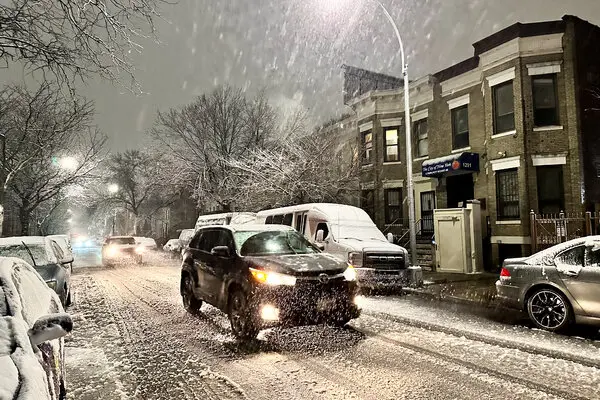New York City experienced a meteorological milestone on January 16 when it received its first measurable snowfall in over 700 days. This significant event marked the end of a prolonged period without substantial snow, setting a new record for the city. Central Park, a prominent location in New York City, reported a layer of snow, breaking the previous record of 400 days without considerable snowfall, which was set in 1998, according to The New York Times.
The unprecedented snowless stretch began after Central Park recorded 1.6 inches of snow on February 13, 2022. The National Weather Service confirmed an inch of snowfall at Central Park since midnight, with a total of 1.4 inches since the storm’s onset on Monday.
New York City, home to 8.5 million residents, had not experienced notable snowfall since early 2022. This contrasts with other areas in New York state, such as Buffalo, which regularly contend with more severe snow conditions.
During Christmas 2022, northern and western parts of New York faced over four feet of snow, leading to numerous fatalities in the region, as reported by AFP. This variability in snowfall patterns across New York state underscores the changing nature of weather events influenced by climate change.
Residents in various parts of the city, including Brooklyn, engaged in clearing sidewalks after the long weekend. The snowfall also led to minor disruptions in public transport and school closures in the northern suburbs. Meteorologist James Tomasini highlighted the significance of this event, comparing it to the previous record-holding snowless streak that ended in March 1998.
The occurrence of such a prolonged snow drought in a city known for its harsh winter weather raises questions about the broader implications of changing climate patterns. Climate change is increasingly recognized as a significant factor influencing weather events and patterns across the globe.
While New York City breaks its record for snowless days, other regions traditionally accustomed to heavy snowfall are experiencing unusual conditions as well. In Kashmir, the “Chilla-i-Kalan,” a 40-day intense winter period, usually witnesses heavy snowfall. However, this year has seen a lack of snow in most of Kashmir’s plains. Weather forecasts predict dry conditions until January 21. Similarly, regions like Ladakh, Manali, and Shimla, known for their snowy landscapes, have also experienced a lack of snowfall this season.
The lack of snowfall in these regions contrasts with the typical winter weather and festive expectations. Christmas and New Year’s Eve, typically associated with snowy landscapes, were notably dry. These deviations from established weather norms underscore the complexities of climate change and its impact on regional weather patterns.
The changing climate is not only altering the frequency and intensity of weather events but also leading to unusual and unexpected variations. Understanding these patterns is crucial for communities and policymakers as they navigate the challenges posed by climate change.
As New York City emerges from its record-breaking snow drought, the event serves as a reminder of the broader climate-related shifts occurring globally. It prompts discussions about the need for adaptive measures, resilient infrastructure, and sustainable practices to mitigate the impact of changing weather patterns on communities around the world.
